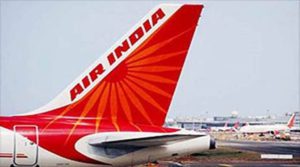Civil Aviation Minister Shri P Ashok Gajapathi Raju launched the Ministry’s much awaited Regional Connectivity Scheme “ UDAN” in New Delhi. UDAN or Ude Desh Ka Aam Naagrik – is an innovative scheme to develop the regional aviation market aiming to make flying a reality for the small town common man.
The scheme will take-off by Jan 2017 and continue for 10 years.
Objectives of UDAN:
- UDAN envisages providing connectivity to un-served and under-served airports of the country through revival of existing air-strips and airports.
- Objective of the scheme is “Ude Desh Ka Aam Naagrik” i.e. making flying a reality for the small town common man..
- The scheme aims to ensure affordability, connectivity, growth and development.
- It aims to increase ticketing volume from 80 million to 300 million by 2022.
Features of UDAN:
- Airfares would be capped at Rs 2,500 for half of the seats in flights traveling a distance of 476-500 kilometer. This translates to around a one-hour journey.
- It would provide a win-win situation for all stakeholders:
- Citizens would get the benefit of affordability, connectivity and more jobs.
- For incumbent airlines there is the promise of new routes and more passengers while for and start-up airlines there is the opportunity of new, scalable business.
- The Centre would be able to expand the regional air connectivity and market.
- The state governments would reap the benefit of development of remote areas, enhance trade and commerce and more tourism expansion.
- Airport operators will also see their business expanding as would original equipment manufacturers.
- UDAN will create affordable yet economically viable and profitable flights on regional routes.
How UDAN will create affordable yet economically viable and profitable flights on regional routes ?
UDAN Model:
On each UDAN flight, airline will provide a minimum of 9 and a maximum of 40 UDAN Seats ( subsidized rates). To increase access to common man price of tickets prices on these UDAN seats, shall be capped at Rs 2,500 for these seats in flights traveling a distance of 476-500 kilometer.
In the case of a helicopter, the operator has to bid for a minimum of 5 seats and a maximum of 13 seats. For helicopters, half-an-hour ride under the scheme would cost Rs 2,500 and for over one-hour duration, the cap would be Rs 5,000.
This means that airlines will go into loss. To compensate airlines Government has come up with various subsidies or sops. These are:
- Viability Gap Funding (VGF): to the interested airlines to kick-off operations from such airports so that the passenger fares are kept affordable.
- Financial stimulus in the form of concessions from Central and State governments and airport operators.
- Central Government would provide concessions in the form of reduced excise duty, service tax, and code sharing.
- State governments will have to lower the VAT on ATF to 1% or less, besides providing security and fire services free of cost and electricity, water and other utilities at substantially concessional rates.
- Airport operators shall not impose Landing and Parking charge and Terminal Navigation Landing Charges in addition to discounts on Route Navigation Facility Charges.
- A Regional Connectivity Fund would be created to meet the viability gap funding requirements under the scheme. A new RCF levy per departure will be applied to certain domestic flights.
- The successful bidder would then have exclusive rights to operate the route for a period of three years. Such support would be withdrawn after a three year period, as by that time, the route is expected to become self-sustainable.
How will airlines get selected ?
The airlines for any route shall be selected on a market-based model where a particular route would be awarded to the participant quoting the lowest VGF per Seat.
Further, if an airline wants to develop a hitherto un-connected route. It can submit proposals to the Implementing Agency. The operator submitting the original proposal would have the Right of First Refusal on matching the lowest bid in case his original bid is within 10% of the lowest bid.
Analysis of UDAN:
Positive:
- There are close to 400 ghost airports in India, airports which have not seen a single flight in the last two air schedules. There are another 16 airports which are termed “under-served” which means they do not have more than a flight a day.These airports may see much more activity after the launch of UDAN.
Concerns:
- Additional levy amount will be charged to finance the regional connectivity fund. Most domestic airlines have threatened to move court opposing the levy. They opined that government needs to fund such schemes from its own budget instead of “imposing more tax on consumers. In such situation, we cannot say how effective shall be the scheme.
- The infrastructure required for 70 seater planes in not available in many of these Secondary airports. For example in Rajasthan 21 airstrips out of which only Jaipur, Jodhpur, Kota & Udaipur are operational at the moment. For other centers the infrastructure needs to be upgraded before any flights can take off.
